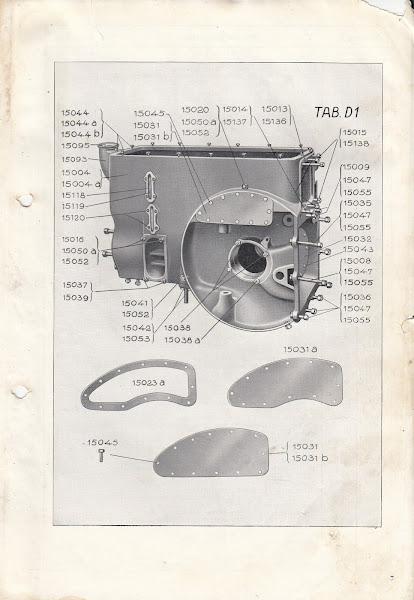
Germany has a well deserved reputation for the the manufacture of high-quality engineering and automobiles, and yet, until the late 1950s, German agriculture sector was notable for its backwardness and lack of industrialization. During the Great War, the British naval blockade of German fertilizer imports caused widespread famine in 1915 and 16. The problem for Germany was not one of space - Germany was almost twice it's current size at the time - but the diversion of manpower to the front during the farming seasons. German farmers were still plowing fields with oxen and horses and harvesting was still done by hand or with horse drawn machines. Without men to labour in the fields, crops failed and the nation went hungry. The photo below from 1910 is indicative.

In the aftermath of the Great War, Germany began to work towards the mechanization of its agricultural sector. One of the companies that made a positive contribution to this goal was Heinrich Lanz of Mannheim. Lanz had been manufacturing plows, harvesters and other farm machinery since the late nineteenth century. Their first tractor was an extremely simple affair. Powered by a single cylinder, horizontally aligned, two-stroke diesel engine that was able to run on poor quality crude oil. Unlike petrol engines, a diesel engine does not use an ignition system or a spark plug for combustion, but the heat created by compression of air within the combustion chamber ignites the fuel mixture. When the piston reaches top dead centre and compression has reached its apex, a tiny amount of fuel is introduced to the chamber which spontaneously detonates on contact with the super-heated compressed air. The advantage of the diesel engine is its simplicity and its fuel economy. The downside of these engines is that they need an external force/energy to initiate combustion.

The Lanz Bulldog, which became the generic name for a large series of tractors of differing sizes, used the hot bulb method of ignition. This involved heating a conductive metal rod that connected to the combustion chamber, until the rod was red hot. The red hot ignition rod facilitated the initial combustion when the operator crank-started the tractor. Once the combustion process started, it would become self-sustaining (see video below).
This all meant that the Lanz Bulldog had a rather lengthy and unique starting process. The tractor came with a paraffin blowtorch, which the operator fired up. The blowtorch was then placed under the 'bulb' at the front of the tractor. The ignition rod was located within the steel bulb housing and would become red hot. While the bulb was being heated, the operator would fill the fuel tank, prime the fuel pump, and lubricate the working parts. Then they would disconnect the steering wheel, insert it into the heavy flywheel at the side of the tractor, and give it a damned good heave. If the conditions were right, the engine would fire and the tractor was ready to go. If the conditions weren't right however, you could be find yourself heaving on the flywheel for a long time. Sometimes it may take as long as half an hour to fire up the engine.

Nevertheless, once going, the Lanz was virtually unstoppable. It was so simple that there was very little that could go wrong with it. Consequently, despite being so primitive, many Lanz tractors remained in service for sixty and seventy years.

From the 1930s, Lanz Tractors were exported all around the world, including Argentina, Brazil and Australia. They were also manufactured under license in many countries.

Lanz would survive the Second World War and continue manufacturing tractors into the 1950s. Post-war models were substantially modernized during this period with electric ignition and lights. In 1956, the American John Deere company purchased Lanz and for a time sold their tractors in Europe under the name John Deere-Lanz. By 1960 however, the Lanz name was dropped and the brand disappeared. During its production run more than 250,000 tractors of all types were built.

The Lanz Bulldog is a crowd favorite in German tractor circles. There is a very large enthusiast group supporting restoration and preservation. Their uniquely unorthodox starting process always draws an interested crowd.

This running Lanz Bulldog at the Tractor Museum at Whiteman Park can be seen running on the second Sunday of each month. https://heinkelscooter.blogspot.com/2021/11/tracmach-and-tractor-museum.html
Lanz Bulldog HR5 Operating Manual: https://heinkelscooter.blogspot.com/2021/10/lanz-bulldog-hr-5-operating-manual.html
Lanz Bulldog HR2 Parts List: https://heinkelscooter.blogspot.com/2021/11/lanz-bulldog-hr-ii-bilingual-parts-list.html
Lanz Bulldog HR2 Operating Manual: https://heinkelscooter.blogspot.com/2021/10/lanz-bulldog-hr-ii-operating.html





















































































































































































































